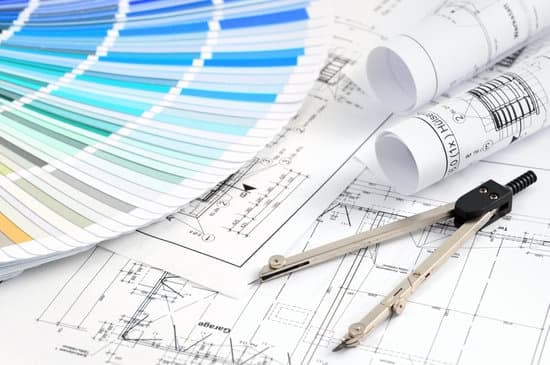What a plan and specification of a home improvement describes is the detailed outline of a project, including scope, materials, budget, and timeline. Understanding the importance of a home improvement plan and specification is crucial for ensuring the success of any renovation or remodeling project. This article will explore the key aspects of creating a comprehensive plan and specification for home improvement projects, from defining the components to collaborating with professionals for successful execution.
A home improvement plan serves as a roadmap for the project, outlining every detail from start to finish. It includes information on design concepts, structural changes, and material selections. Meanwhile, specifications define the scope of work in detail, including measurements, material quality standards, and technical requirements. Both elements play a vital role in guiding the project towards successful completion.
In this article, we will delve into the essential components of a home improvement plan and specification, detailing their significance in ensuring that the project meets its objectives. From understanding the role of specifications in defining the scope of work to the importance of detailed measurements and drawings, this article will provide valuable insights into creating an effective plan for your next home improvement project.
What Is a Home Improvement Plan
A home improvement plan is a detailed outline of the work to be done on a property, including the changes and enhancements that will be made. It involves breaking down the components of the project into specific tasks and requirements, ensuring that all aspects of the improvement are carefully considered and planned for.
The plan typically includes detailed information about the scope of work, materials to be used, budget and timeline, measurements and drawings, and legal requirements such as permits. It serves as a roadmap for the entire project, providing guidance for both homeowners and contractors on what needs to be done and how it should be executed.
One of the key components of a home improvement plan is the breakdown of tasks and responsibilities. This outlines who will be responsible for each aspect of the project, whether it’s the homeowner or various contractors and professionals. This helps to ensure that everyone involved understands their role in the process and can work together effectively towards a successful outcome.
Detailed information about materials is also included in a home improvement plan. This involves specifying the type, quality, quantity, and source of materials to be used in the project. Material selection is crucial in achieving the desired end result, so this part of the plan ensures that there are no misunderstandings or discrepancies when it comes to sourcing and using materials for the improvement.
| Component | Description |
|---|---|
| Scope of Work | Detailed outline of all tasks to be performed |
| Materials | Specification of type, quality, quantity, and source |
| Budget & Timeline | Clear guidelines on financial allocation and project schedule |
The Role of Specifications in Home Improvement
A crucial aspect of any home improvement project is the detailed specification, which plays a fundamental role in defining the scope of work. In essence, the specifications outline the specific requirements and standards that must be met during the project.
This includes details on materials, methods, and quality levels to be achieved. Essentially, it serves as a roadmap for contractors and other professionals involved in the project, ensuring that everyone is on the same page regarding what needs to be done.
The specifications section of a home improvement plan provides clear guidelines for all aspects of the project. It outlines every detail from the type of materials to be used, dimensions, finishes, fixtures, and even installation methods. By providing this level of detail, it ensures that there are no misunderstandings or confusion among those working on the project.
Additionally, detailed specifications help homeowners to have a clear understanding of what to expect from their home improvement project. It allows them to see exactly what is included in the scope of work and what materials will be used. This transparency is essential for effective communication between the homeowner and the professionals executing the project. Ultimately, it contributes to a smoother and more successful home improvement experience.
| Component | Importance |
|---|---|
| Clear guidelines | Ensures no confusion among workers |
| Transparency | Effective communication with homeowners |
The Importance of Detailed Measurements and Drawings in a Home Improvement Plan
When it comes to a home improvement project, one of the most crucial aspects is detailed measurements and drawings. This section will discuss the importance of these elements in a home improvement plan, and how they contribute to the overall success of the project.
Precise Planning and Execution
Detailed measurements and drawings are essential as they provide a clear roadmap for the project. Without accurate measurements, there is a risk of errors in construction or installation, which can lead to costly rework. Additionally, precise drawings ensure that everyone involved in the project understands exactly what needs to be done, leading to a more efficient and effective execution.
Visualizing the End Result
Detailed drawings allow both homeowners and contractors to visualize the end result of the home improvement project. This visual representation helps in making informed decisions about design elements, materials, and layout before any work begins. It also assists in identifying any potential issues early on, preventing costly changes during construction.
Quality Assurance
Furthermore, detailed measurements and drawings contribute to quality control throughout the project. By having clear specifications for every aspect of the improvement, from structural changes to finishes, it ensures that all work meets standards and regulations. This attention to detail ultimately leads to a high-quality end result that meets or exceeds expectations.
In summary, detailed measurements and drawings play a crucial role in a home improvement plan by providing precision in planning and execution, allowing for visual representation of the end result, and ensuring quality control throughout the project. These components should not be overlooked when creating a comprehensive plan and specification for any home improvement endeavor.
Material Selection and Quality Control in Home Improvement Specifications
When it comes to home improvement projects, material selection and quality control play a crucial role in the success of the endeavor. This section will delve into the importance of carefully choosing materials and ensuring strict quality control measures in the specifications of a home improvement plan.
Choosing the Right Materials
One of the key aspects of a home improvement specification is selecting the right materials for the project. Whether it’s for flooring, cabinetry, countertops, or fixtures, each material choice can significantly impact both the aesthetic and functional aspects of the space. The specification should clearly outline the preferred materials, including details such as brand, model, color, size, and any other relevant information that helps contractors and suppliers understand exactly what is required.
Ensuring Quality Control
In addition to specifying the materials to be used, a home improvement plan must also address quality control measures. This includes setting standards for craftsmanship, durability, and performance expectations for the chosen materials. Quality control guidelines should be clearly outlined in the specification to ensure that all parties involved understand what is required to meet project standards. This can include details on inspections, testing procedures, and any industry-specific regulations that need to be adhered to.
Impact on Project Success
The meticulous selection of materials and strict adherence to quality control measures outlined in a home improvement specification can significantly impact project success. By clearly defining these aspects within the plan, homeowners can ensure that their vision is accurately translated into reality without compromising on quality or durability.
Moreover, this attention to detail helps avoid potential issues during construction or post-completion maintenance due to subpar material choices or lackluster quality control measures. Ultimately, by prioritizing material selection and quality control in home improvement specifications, homeowners can look forward to successful project outcomes that meet their expectations.
Understanding the Budget and Timeline in a Home Improvement Plan
When it comes to planning a home improvement project, understanding the budget and timeline is crucial for its success. A well-thought-out plan and specification will include detailed information about the financial aspects of the project as well as a realistic timeline for completion. Here are some key components that make up the budget and timeline in a home improvement plan:
- Cost Estimates: An accurate cost estimate is essential in ensuring that the project stays within budget. This includes accounting for all materials, labor, permits, and additional expenses such as waste disposal or equipment rental.
- Contingency Fund: It’s important to include a contingency fund in the budget to account for unexpected expenses that may arise during the project.
- Timeline: A detailed timeline outlining each phase of the project, including start and end dates for each task, helps in effectively managing the project and ensures that it stays on track.
In addition to these key components, a well-defined budget and timeline also consider any potential delays or challenges that may impact the overall progress of the project. By anticipating potential obstacles and having a plan in place to address them, homeowners can better manage their expectations and avoid unnecessary stress throughout the duration of the home improvement project.
Ultimately, understanding the budget and timeline in a home improvement plan enables homeowners to make informed decisions about their project, maintain control over costs, and ensure that their vision for their home is realized within a reasonable timeframe. The careful consideration of these factors can ultimately lead to a more successful and satisfactory outcome for all parties involved.
The Significance of Permits and Legal Compliance in Home Improvement Plans and Specifications
When undertaking a home improvement project, it is crucial to ensure that all necessary permits and legal compliance requirements are met. Failing to do so can result in costly fines, delays in the project, or even having to undo completed work. Here’s what a plan and specification of a home improvement describes when it comes to permits and legal compliance:
Why Permits Are Important
Obtaining the required permits for a home improvement project ensures that the work meets safety and building code standards. This helps to protect the homeowner, future occupants, and neighboring properties. Without proper permits, there is no guarantee that the work has been inspected by the local authorities to ensure it meets these standards.
The role of specifications in this aspect involves outlining the specific permits needed for the project, whether it’s for structural changes, electrical work, plumbing alterations, or any other modifications to the property. The specifications also define the timeline for obtaining these permits and outline who is responsible for securing them.
Legal Compliance Requirements
In addition to permits, there may be various legal compliance requirements that need to be addressed in a home improvement plan. This could include adherence to zoning regulations, historic district guidelines, environmental regulations, or homeowners’ association rules. The plan should detail how these requirements will be met and incorporate any necessary approvals into the project timeline.
Compliance with these regulations not only ensures that the project proceeds smoothly but also avoids potential legal issues down the line. The specifications should clearly outline these requirements and address any potential challenges that may arise during the approval process. By doing so, it helps mitigate risks and sets realistic expectations for all stakeholders involved in the home improvement project.
Collaborating With Contractors and Design Professionals for Successful Home Improvement Projects
When it comes to executing a home improvement plan and specification, one of the key elements for success is collaborating effectively with contractors and design professionals. Whether you’re working on a small renovation or a major overhaul, having the right team in place can make all the difference in achieving your desired results.
Contractors play a crucial role in bringing the home improvement plan to life. They are responsible for executing the physical work outlined in the specifications, such as demolition, construction, installation, and finishing.
It’s important to work with licensed and experienced contractors who have a proven track record of delivering high-quality work within budget and on schedule. Additionally, communication is key when collaborating with contractors to ensure that the project stays on track and any potential issues are addressed promptly.
On the other hand, design professionals contribute their expertise in creating aesthetic and functional spaces that align with your vision for the home improvement project. Whether it’s an interior designer, architect, or engineer, their input can be invaluable in refining the details of the plan and specifications. From selecting materials and finishes to optimizing layout and flow, design professionals bring a level of creativity and technical knowledge that can elevate the overall outcome of the project.
Ultimately, successful collaboration with contractors and design professionals hinges on clear communication, mutual respect for each other’s expertise, and a shared commitment to achieving the goals laid out in the home improvement plan and specification. By fostering a collaborative environment where everyone’s talents are maximized towards a common objective, homeowners can expect their vision to come to life with precision and excellence.
Conclusion
In conclusion, a well-executed home improvement plan and specification is crucial for the success of any project. It serves as a roadmap, outlining the scope of work, budget, timeline, and materials needed for the renovation or construction. What a plan and specification of a home improvement describes is not just the physical aspects of the project but also legal compliance and quality control.
By providing detailed measurements and drawings, a home improvement plan ensures that all parties involved have a clear understanding of what needs to be done. This helps in avoiding misunderstandings or errors during the construction process. Additionally, specifying the materials to be used and setting quality control standards ensures that the end result meets the desired standards.
Furthermore, obtaining permits and complying with legal regulations are crucial steps in any home improvement project as they ensure that the work is being done within the boundaries set by local authorities. Lastly, collaboration with contractors and design professionals is key to ensuring that the project is executed seamlessly. By taking all these factors into account, a well-thought-out home improvement plan and specification significantly increases the chances of overall project success.

I’m thrilled to have you here as a part of the Remodeling Top community. This is where my journey as an architect and remodeling enthusiast intersects with your passion for transforming houses into dream homes.





